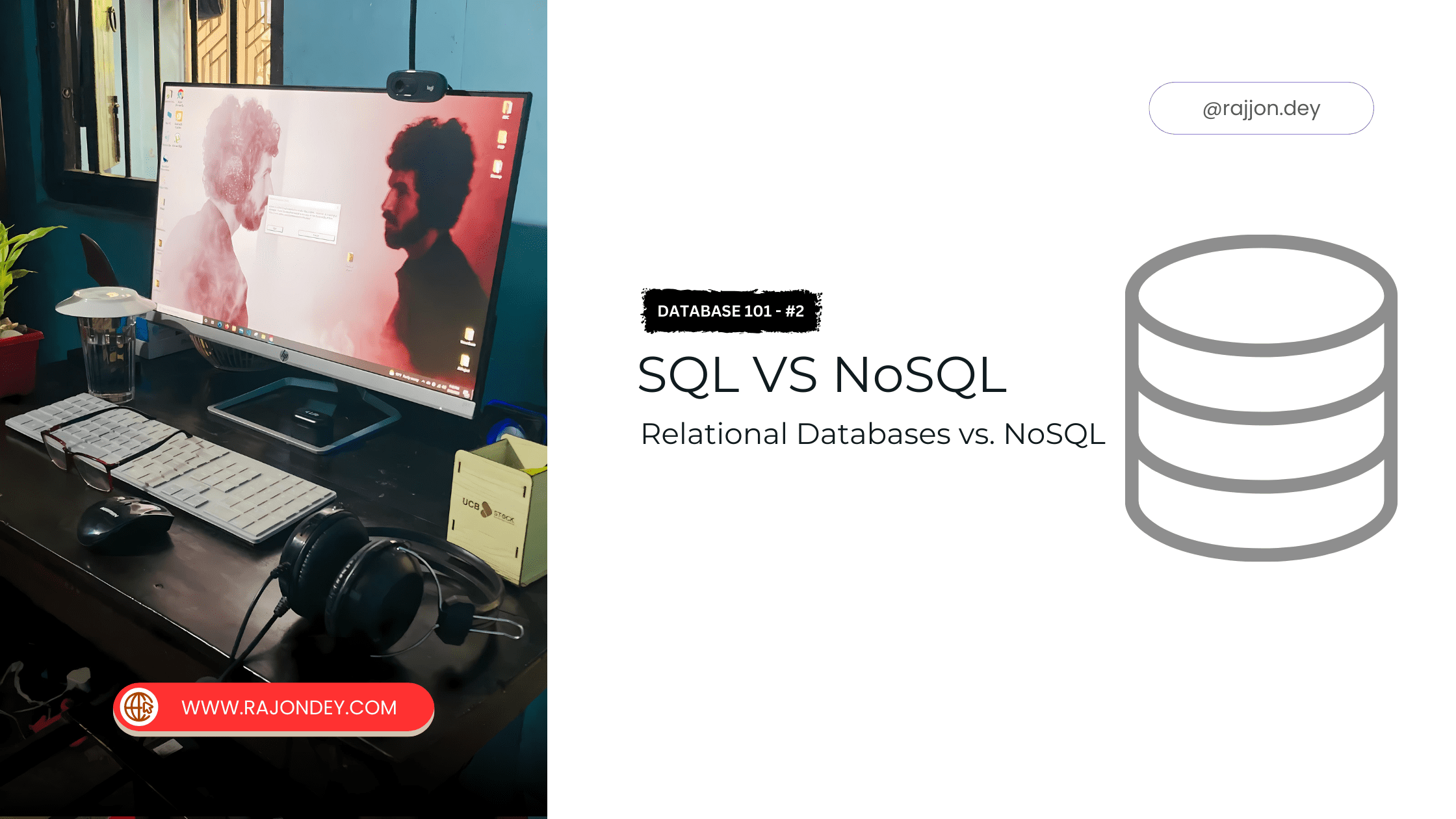Relational Databases(SQL) vs. NoSQL
 Rajon Dey
Rajon Dey
Relational databases are structured around tables, rows, and columns. Each table is a collection of related data entries, and each entry is organized as a row with specific columns. This structured approach makes it easy to manage and query data using SQL (Structured Query Language).
Example: Imagine a simple database for a bookstore:
Table: Books
SQL Query:
SELECT title, author FROM Books WHERE price < 10.00;
NoSQL Databases
NoSQL databases offer a more flexible approach, using documents, collections, and fields. This makes them ideal for unstructured or semi-structured data. NoSQL databases can store data in various formats, including JSON, making them highly adaptable to different types of data and use cases.
Example: Here’s a similar example using a document-based NoSQL database (like MongoDB):
Collection: Books
[
{
"id": 1,
"title": "The Great Gatsby",
"author": "F. Scott",
"price": 10.99
},
{
"id": 2,
"title": "1984",
"author": "George Orwell",
"price": 8.99
}
]
NoSQL Query (MongoDB):
db.Books.find({ price: { $lt: 10.00 } }, { title: "1, author: 1 });"
Popular Databases
Relational Databases:
MySQL: Widely used for web applications and known for its speed and reliability.
PostgreSQL: Praised for its advanced features and compliance with SQL standards.
Oracle Database: A robust option for large enterprises with complex requirements.
SQL Server: Integrates well with other Microsoft products and is popular in enterprise environments.
NoSQL Databases:
MongoDB: A leading document-based database, great for handling JSON-like documents.
Redis: A key-value store known for its speed and used for caching and real-time analytics.
Apache Cassandra: A column-family store that's highly scalable, perfect for big data applications.
Neo4j: A graph database that's ideal for data with complex relationships, like social networks.
Subscribe to my newsletter
Read articles from Rajon Dey directly inside your inbox. Subscribe to the newsletter, and don't miss out.
Written by

Rajon Dey
Rajon Dey
I'm a Software Developer, my passion is crafting smart, meaningful, and professional websites that enhance the online presence of individuals and businesses, making the web a more engaging, effective, and better platform. Get the data - https://developer-data.beehiiv.com/